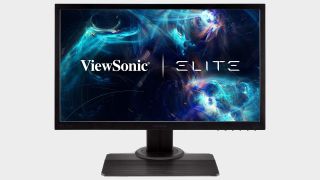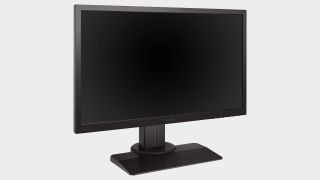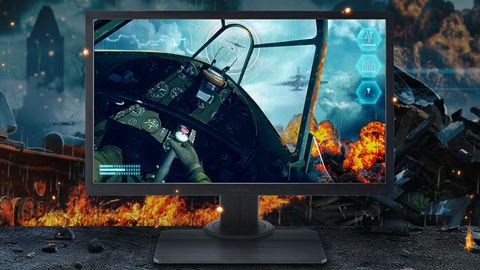Our Verdict
A decent gaming monitor, the ViewSonic XG240R's strengths and weaknesses define it: brilliant for fast-paced games; less good with detailed high-quality images.
For
- Fast refreshing screen
- Low-blur in modern battle royale games
- Decent price point
- Lots of options in the menu
Against
- Overall image detail and quality are lacking
- ‘False brightness’ seems to be always present
PC Gamer's got your back
Monitors are an incredibly important addition to your setup as they’ll likely last several generations of upgrades but, equally, they can be an expensive outlay. And while there’s been some awesome progress at the ‘top end’ of the spectrum with 4K and HDR monitors there’s always room for innovation and advancement at the more affordable end of the spectrum. Step forward the new model 24-inch, Full HD from ViewSonic, the XG240R.
Price: $275
Panel Size: 24-inch
Native Resolution: 1920x1080
Panel Type: TN
Maximum Refresh: 144Hz
Response: 1ms
Contrast: 1,000:1
Display Inputs: 2 x HDMI 1.4, DP 1.2
Connectivity: 3 x USB 3.0
VESA Mount: 100mm
Warranty: Three years
Straight out of the box the monitor and stand comes in three different parts: 1 part monitor; 2 parts stand. These were pretty simple to put together: the column slipped on to the back fo the monitor and is held with built-in fixings; the column then attached to the base easily with an effective and hidden thumb screw connecting the two together on the underside of the base. Overall, the XG240R was easy to assemble. And when it is assembled, it looks sharp enough as a monitor on the whole and as a desk item or piece of furniture: everything forward facing is slick black, so it blends neatly into a gaming and desk setup. It’s a decent size on the desk overall, but that’s to be expected as its in that standard size bracket. On the monitor’s front are bezels which seem relatively standard and unobtrusive, but at the same time thicker than most monitors—particularly premium ones—though it's no real issue. The LED panels on the back are pretty sharp, but provide no great benefit aesthetically as there won’t be anything to see from the front—apart from maybe a glow of color from an adjacent wall or piece of furniture that the LED’s light can bounce off. It’s a fun feature but there’s no real way to enjoy it once you’re using the monitor.

Straight out of the box, the XG240R has features that are much as you’d expect: aside from the monitor and its stand, there are the cables and the usual quick start guide. All the ports are on the underside of monitor and include a DisplayPort, HDMI, two USB-As, one USB-B, and an audio out. All helpful and you should have plenty there to fix it up to your machine whatever your preferences. Its internal speakers are serviceable but not great; I’d recommend using them only if you have no alternative like one of the best gaming headsets. After turning it on you’ll then come across one of its most distinctive features: the menu. There are loads of options for tweaking your setting, almost too many, but the XG240R's menus provide plenty of options and flexibility to find the right settings for your setup. If you love getting lost in your monitor's menus, this is a treat.
Beyond the customization options, the XG240R boasts a wealth a decent stats: 144Hz refresh rate, 1ms response time, and its FreeSync enabled. This is fast becoming the norm for the best gaming monitors, so it's good to see them here. But how does it all perform?

Booting up Metro: Exodus, I was excited to see how it handled the finely detailed world of post-apocalyptic Russia, but also the change in colors and contrasts, from the dark and claustrophobic tunnels, to the open landscapes. It was certainly better when environments were open and well lit. The contrasts were a bit off on the whole but the XG240R did a pretty good job of displaying the open landscapes. However, the overall image quality wasn’t as excellent as I was perhaps hoping for, and the greys and blacks of the tunnels were not as deep as I've seen, with contrasts not being as clear as I’d like either. Having said this, the deep space of Elite Dangerous was actually pretty good, given the mediocre output I found in Metro Exodus’s darkness. And it was with Elite that I started to get a good grasp of the monitor's speed and response time: it was all silky smooth and fast, with no tearing or stuttering even in the busiest of dogfights. Shifting gears, I booted up Apex Legends. This seemed to highlight the best of the monitor: fast, pacey responsive and so smooth, it seemed like fast-paced shooters and battle royale-ers are its bread and butter. It wasn’t bursting with quality on the fine details, but then most don’t play games like Apex Legends for that level of detail. You play the for their chaotic speed, quick reflex shooting and movement—and the ViewSonic XG240R excelled here. It was fast as hell, and the 1ms response time and the 144Hz refresh rate were easy to appreciate.
Unfortunately a consistent problem I noticed with the monitor was that everything seemed to have a false shine or brightness to it—even when manually adjusting the settings. This really didn’t help the overall picture quality and contrast. For example fire in the darkness in Metro Exodus had a fuzzy haze radiating from it in the immediate, adjacent screen space. Trying to adapt display settings or presets during play rather to rectify this, however, highlighted the issue with the monitor's labyrinthine menu. To prevent you from having to mess with setting mid-game there are a whole host of handy presets to choose from, which seemed to fit their relative descriptors pretty well. There are presets in three categories: Speed Focus (with presets for FPS, MOBA, and battle royale); Color Focus (with presets for Realistic and Vibrant; and Console (with presets for Speed and Color). Sadly, none of these seemed to fix that false sheen.
And there's another slight problem here: the viewing angle. While the monitor is easily adjusted, having it a fraction too low or the unwelcome presence of nearby light can significantly diminish the quality of the image. It's crisp when you're all settled, but doesn't allow for much movement.

Overall, it was the gaming tests which really defined what the ViewSonic XG240R is good at and not so good at. It’s colors are decent, though not incredibly vibrant or punchy; it’s contrasts are standard; its overall image quality is pretty good though not super detailed or brilliantly crisp and can appear a bit granular at times. Overall, you notice that this is 1080p and not anywhere near 4K. Its main strength is definitely speed. All through the review process its refresh rate, response time and ability to present PC’s high frame rates was highly commendable.
Just to complete the review package, I tried a movie and a couple of TV shows. This was perfectly fine, but that constant false-brightness was still noticeable. Plus with its size and getting the viewing angle right, it's not ideal. It’ll do if you need to retreat to your office/gaming room to watch a film every now and then but by no means would it be your number one choice.
If you’re looking for a monitor for fast-paced shooters at a decent price, then this could be it. It's perfect for Apex Legends and Fortnite. But if you're seeking a screen that can handle the highest quality images, and will show off your fancy new RTX graphics card, this isn’t it. The low-end pricing might be attractive for those who want to buy a serviceable monitor right now, but are waiting for a bigger purchase later, like one of the best 4K monitors for gaming. It's good, but this isn't a screen that will last you for several generations of upgrade.
A decent gaming monitor, the ViewSonic XG240R's strengths and weaknesses define it: brilliant for fast-paced games; less good with detailed high-quality images.

